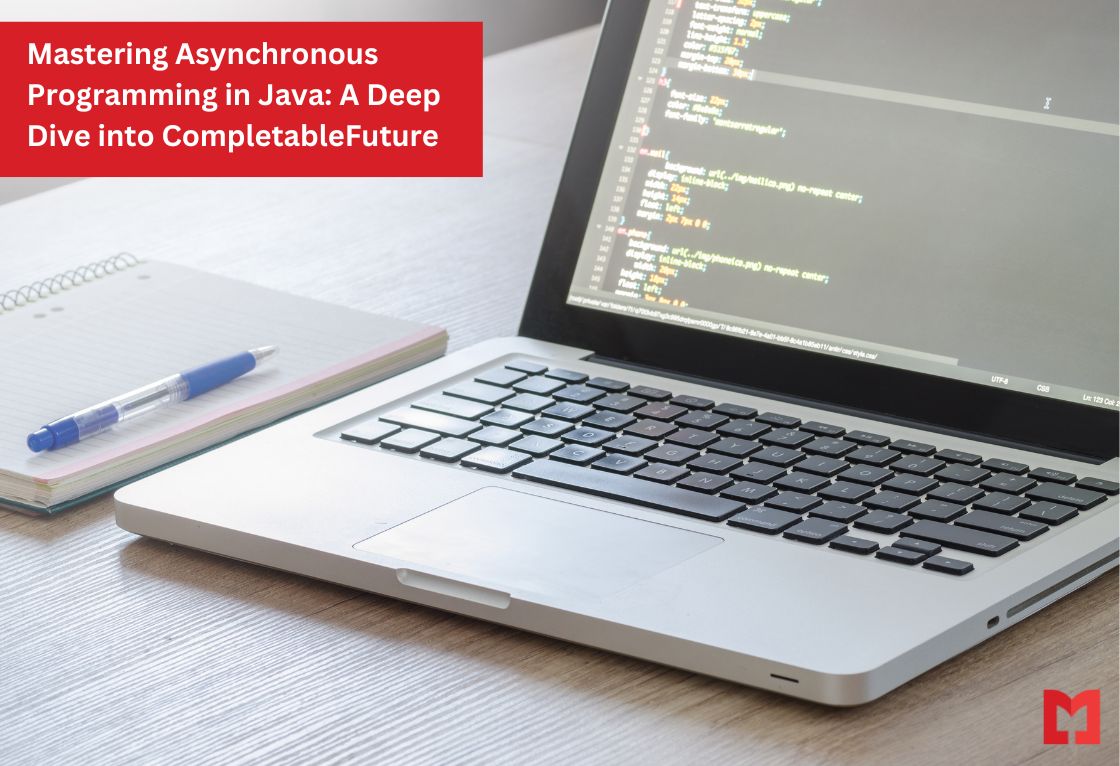Introduction
In modern Java programming, asynchronous processing has become essential for building scalable, high-performance applications. It allows tasks to run concurrently without blocking threads, improving efficiency and user experience. Among Java’s many tools for asynchronous programming, CompletableFuture, introduced in Java 8, stands out for its versatility and simplicity.
This blog will provide a comprehensive deep dive into:
- What asynchronous programming is and why it matters.
- Key features of CompletableFuture.
- Practical examples of using CompletableFuture.
- Best practices for mastering asynchronous programming in Java.
What is Asynchronous Programming?
Asynchronous programming is a technique that allows tasks to execute independently of the main thread, enabling concurrent processing. Unlike synchronous programming, where tasks execute sequentially, asynchronous code improves responsiveness and reduces latency.
Benefits of Asynchronous Programming:
- Improved Performance: Tasks can run concurrently, utilizing system resources efficiently.
- Better Scalability: Ideal for handling multiple simultaneous requests in web or networked applications.
- Enhanced User Experience: Prevents UI freezing in applications by offloading long-running tasks.
What is CompletableFuture?
CompletableFuture is a class in Java’s java.util.concurrent package that represents a future result of an asynchronous computation. It allows developers to build non-blocking code with a rich API for chaining and combining tasks.
Key Features of CompletableFuture:
- Non-Blocking: Executes tasks asynchronously without blocking the main thread.
- Chaining: Supports method chaining for sequential task execution.
- Combining Tasks: Allows combining multiple CompletableFutures into a single result.
- Exception Handling: Provides robust error handling mechanisms.
Practical Examples of CompletableFuture
1. Creating a Simple CompletableFuture
import java.util.concurrent.CompletableFuture;
public class CompletableFutureExample {
public static void main(String[] args) {
CompletableFuture<String> future = CompletableFuture.supplyAsync(() -> {
// Simulate a long-running task
return "Hello from CompletableFuture!";
});
future.thenAccept(result -> System.out.println(result));
}
}
2. Chaining Asynchronous Tasks
CompletableFuture.supplyAsync(() -> "Task 1")
.thenApply(result -> result + " -> Task 2")
.thenApply(result -> result + " -> Task 3")
.thenAccept(System.out::println);
Output:
Task 1 -> Task 2 -> Task 3
3. Combining Multiple Futures
CompletableFuture<String> future1 = CompletableFuture.supplyAsync(() -> "Result 1");
CompletableFuture<String> future2 = CompletableFuture.supplyAsync(() -> "Result 2");
CompletableFuture<String> combined = future1.thenCombine(future2, (result1, result2) -> result1 + " and " + result2);
combined.thenAccept(System.out::println);
Output:
Result 1 and Result 2
4. Handling Exceptions
CompletableFuture.supplyAsync(() -> {
if (true) throw new RuntimeException("Something went wrong!");
return "Success";
}).exceptionally(ex -> "Error: " + ex.getMessage())
.thenAccept(System.out::println);
Output:
Error: java.lang.RuntimeException: Something went wrong!
Best Practices for Asynchronous Programming with CompletableFuture
- Use Async Variants: Prefer methods like thenApplyAsync and thenAcceptAsync for better thread utilization in multi-threaded environments.
- Handle Exceptions Gracefully: Always handle exceptions using exceptionally or handle to avoid unhandled errors.
- Combine Tasks When Possible: Use methods like thenCombine and allOf to simplify working with multiple futures.
- Avoid Blocking Calls: Refrain from using methods like get() or join() in performance-critical code.
- Leverage Thread Pools: Customize thread pools with Executor for better control over thread management.
Conclusion
CompletableFuture is a powerful tool for mastering asynchronous programming in Java. By leveraging its features, developers can build efficient, non-blocking applications that scale effortlessly. From chaining tasks to handling exceptions, CompletableFuture simplifies complex workflows while enhancing performance.
At MetaDesign Solutions, we specialize in Java application development and can help you build scalable, high-performance software using modern Java practices. Contact us at sales@metadesignsolutions.com to learn more about our services.
Related Hashtags
#JavaProgramming #CompletableFuture #AsynchronousProgramming #JavaDevelopment #ConcurrencyInJava #JavaConcurrency #ModernJava #Java8Features #JavaAsync #HireJavaDevelopers #SoftwareDevelopment #NonBlockingCode #TechSolutions #EfficientProgramming
